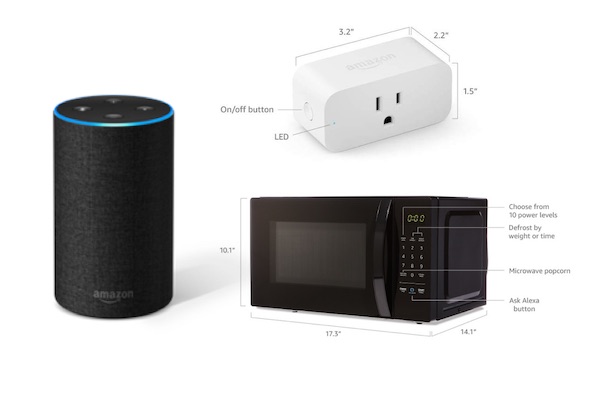Look for Continued Smart Home Focus at Amazon’s Product Event – The Category Has Outperformed Expectations and Rose 45% in 2018
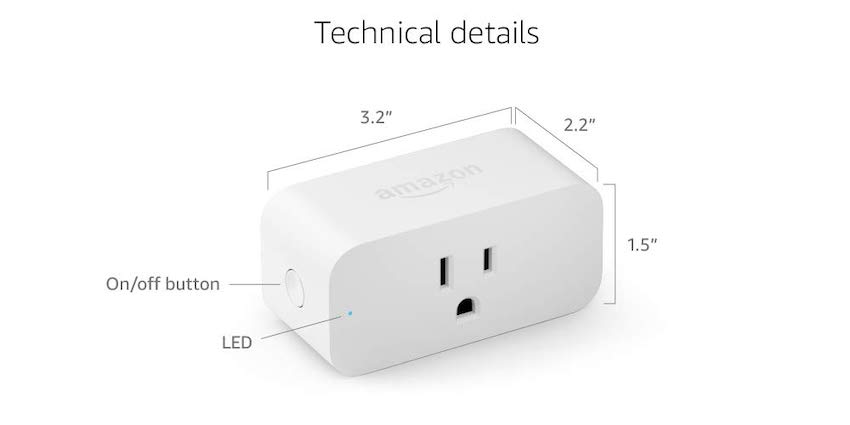
We may see headline-grabbing announcements at today’s Amazon event such as new Alexa earbuds, a voice-activated hot tub, massage chair, or even a robot. But, pay attention to the everyday smart home products and features. These products may be less exciting to write about, but Daniel Rausch, vice president of smart home for Amazon, told Voicebot in an interview that there have been some breakout surprises in the category. A good example is the Amazon Smart Plug introduced at the company’s 2018 hardware event.
Amazon executives intended the Smart Plug to be reference product for other manufacturers to emulate. The product is even priced well above its competitors at $24.99. Rausch says the average for the category is $10-$15 but some sell today below that range. Despite the premium pricing, the company has “sold millions of smart plugs,” when the expectations were sales a small fraction of what took place.
The Smart Home and Smart Speaker Synergy
Smart home aficionados were a key group that drove early sales of Amazon Echo devices back in 2015-16. These consumers are exactly the type of tinkerers that enjoy a provocative but immature product like a first-generation smart speaker. Alexa offered the opportunity to bypass the mobile app and control smart home devices by speaking, although that sometimes required ingenuity on behalf of the user to make it work. Regardless, voice interactivity was a quick way to make a smart home seem even smarter.
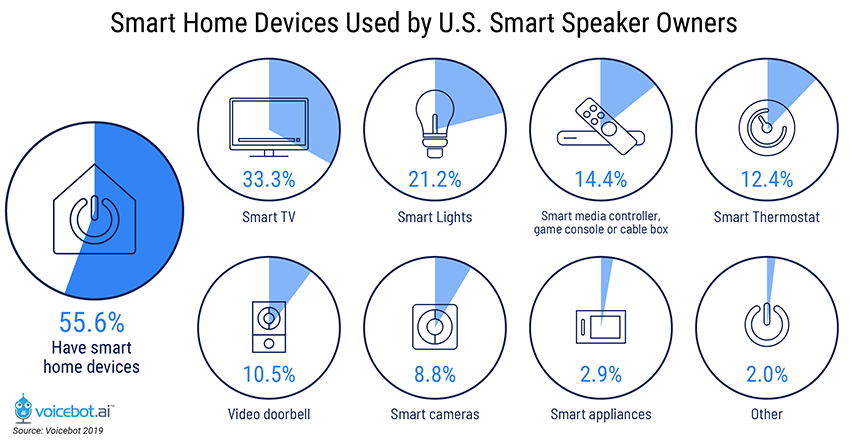
Voicebot data consistently show that smart speaker owners are much more likely to have smart home devices than the average U.S. adult. Statista found that smart home adoption in the U.S. reached 15% of the population in 2018. Among smart speaker owners, that figure was 55.6% last year. Not all those smart home users have connected their devices to Alexa. Amazon has been working to make that process easier and more widespread.

Daniel Rausch, Amazon
Rausch commented, “Early signs from smart home enthusiasts led us to build the smart home APIs. Customers were hacking the to-do list to control their home lighting. Smart home enthusiasts has never been a consumer segment that has numbered in the tens of millions. The simplicity of the voice interface has been critical in unlocking this.”
Smart home early adopters were a small group and smart speaker owners soon surpassed them in number. That shift created an opportunity to introduce smart home to an entirely new set of consumers. Amazon’s merchandising teams were quick to recognize the opportunity to bundle smart home devices with smart speakers. Consumers that hadn’t considered smart home devices before suddenly had new reasons to consider them.
The motivations were straightforward. First, there were deals to be had. Steep discounts were and are offered when purchasing smart home products in conjunction with Amazon’s smart speaker products. Second, smart home features are a good way to extend the value of your smart speaker investment. Today, smart speakers are more likely to drive smart home devices sales than the other way around. “I am positives it has opened up smart home to many more customers and increased interest in trying out smart home use cases…The simplicity of the voice interface has been critical in unlocking this,” said Rausch.
I am positives it has opened up smart home to many more customers and increased interest in trying out smart home use cases.
Simple Setup Drives Sales
The story of the Amazon Smart Plug is about these new smart home consumers. They typically lack the technical skill and patience of early smart home adopters who will suffer through complex setup and hours of troubleshooting to get the configuration working reliably. New smart home solution buyers are not interested in tinkering. They want the benefits without the hassle. Rausch told Voicebot:
“Frustration-free setup is providing a setup for smart home the way people want. Basically, you plug it in and it works. With the Smart Plug and the 4.5 stars it has achieved–over 80% are 5-star [reviews]–you see customers raving about a setup experience. That is not something you find on other products. No one spends any time other than complaining about setup experience for other product categories…Having sold millions of Amazon Smart Plugs is a testimonial that you are not going from 17 to 15 steps. You just plug it in and it works. Consumers seek out products like that.”
You can see this in the nearly 14,000 reviews of the Smart Plug on Amazon’s website. Six percent are 1-star reviews and express some sort of frustration with the setup process, typically issues connecting to WiFi. However, over 81% are 5-star reviews and extoll the virtues of the easy setup.

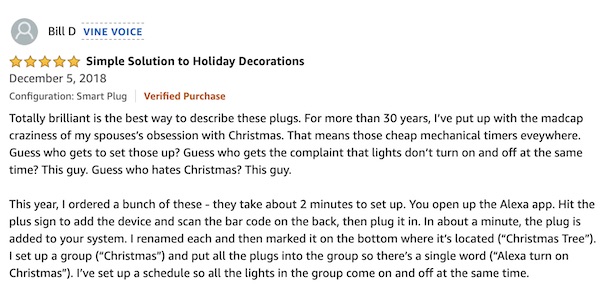
A list on Amazon.com highlights four smart plug products in terms of “best overall,” “best value,” “best multi-pack,” and “simplest.” The first three are third-party sellers. The “simplest” is, of course, the Amazon Smart Plug. From a technical perspective, the goal was to eliminate steps and push the discovery and configuration onto Alexa. Third-party device makers have noticed. Fustration-free setup has already been implemented in some TP-Link and Philips products.
Rausch said you will see many more of these products soon. It takes about a year to get new technology into product lines for most manufacturers. We are now a year from introduction so the time is right for products highlighting frustration-free setup to hit the shelves. He added, “We think about the flywheel of developing key technologies for developers so anyone can use them.”
Simple Alexa Integration
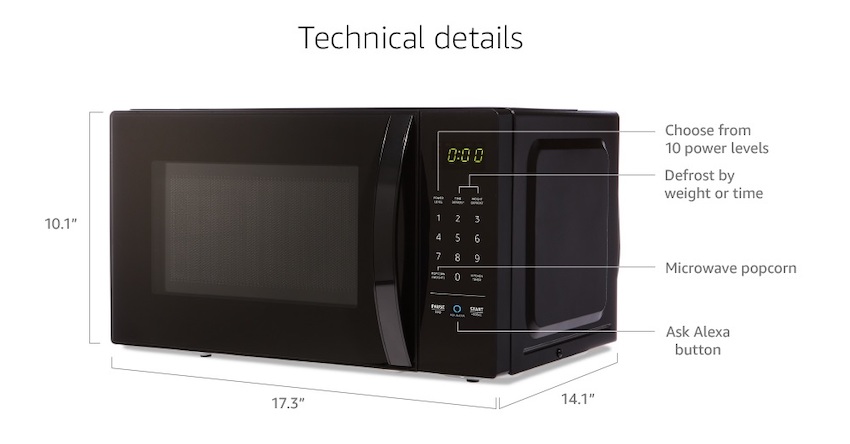
The Alexa Microwave was likely the most written about of the new products introduced last year. Rausch declined to share sales figures on the microwave but it has a 4-star rating from nearly 2,000 reviews. Most of the complaints are not about the Alexa integration. Instead, reviewers are more likely to complain about the core microwave features such as its power and size. Rausch commented:
“The goals with the microwave and Alexa Connect Kit were the same: build a module that is average size and an average power microwave without having to write an Alexa skill, without having to do anything other than map the software and add a chip to a board. It’s a very low fixed cost for a device maker. They can focus on what they do best–build a great blender or coffee maker and with competencies they already have can have a smart device. The microchip and software [came out] last year. You can imagine there is news to be had about products soon.”
Rausch said Spectrum Brands, P&G, and Hamilton Beach have announced working on adopting Alexa Connect Kit. Some suppliers in the appliance manufacturing supply chain have also said they can integrate Alexa Connect Kit into products for their customers.
Just Look at the Growth
Not every product is going to exceed expectations like the Smart Plug. However, you only need to look at what is happening in smart home products to understand how Alexa has changed the entire category outlook. Between 2014-2017, Rausch says third-party product integrations with Alexa climbed from zero to 4,000. In 2018, that rose from 4,000 to 30,000. The figure rose again to 60,000 devices across 7,400 brands in the first few months of 2019. And, this expansion of Alexa integration paralleled a rise in sales. “The smart home category grew 45% in 2018 alone…Developers responded to consumer interest,” says Rausch.
So, there may be a fancy robot or other shiny objects on stage at Amazon’s launch event later today. However, pay attention if you see a voice-interactive toaster oven, lamp, or blender. One of those just may become the breakout product hit for 2020.
Follow @bretkinsella Follow @voicebotai
Amazon Says 60,000 Devices Are Now Alexa Compatible, Google Assistant is at 30,000


